Plot
Jamil (Ramon Novarro) is a soldier in the Bedouin defense forces during a war between Syria and Turkey, who has deserted his regiment. In a remote village, he encounters an orphan asylum run by American missionaries Dr. Hilbert (Jerrold Robertshaw) and his daughter Mary (Alice Terry). The village is attacked by the Turks, and its ruler, eager to placate the invaders, intends to hand over the children for slaughter; he disguises his intentions under a move to Damascus for their safety.
The Bedouins arrive at the scene and reveal that Jamil is the son of the tribal leader. With his father's death revealed, Jamil becomes the new leader of the tribe, which endows him with a sense of responsibility. Risking his own life, he proceeds to save the children, defeating the Turks and the local leader in the process (and winning the girl).
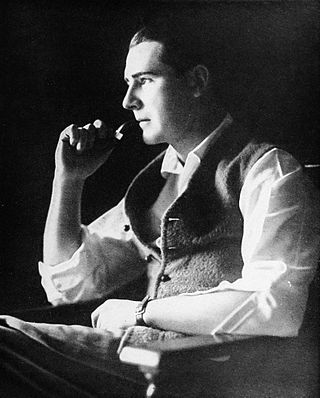
Rex Ingram was an Irish film director, producer, writer, and actor. Director Erich von Stroheim once called him "the world's greatest director".

Ramón Gil Samaniego, known professionally as Ramon Novarro, was a Mexican actor. He began his career in American silent films in 1917 and eventually became a leading man and one of the top box-office attractions of the 1920s and early 1930s. Novarro was promoted by MGM as a "Latin lover" and became known as a sex symbol after the death of Rudolph Valentino. He is recognized as the first Latin American actor to succeed in Hollywood.

Ben-Hur: A Tale of the Christ is a 1925 American silent epic adventure-drama film directed by Fred Niblo and written by June Mathis based on the 1880 novel Ben-Hur: A Tale of the Christ by General Lew Wallace. Starring Ramon Novarro as the title character, the film is the first feature-length adaptation of the novel and second overall, following the 1907 silent short film.

Mare Nostrum is a 1926 American silent war drama film directed by Rex Ingram. It was the first production made by Ingram while in voluntary exile and stars Ingram's wife, Alice Terry. The film is set during World War I, and follows a Spanish merchant sailor who becomes involved with a German spy. It is based on the novel of the same name by Vicente Blasco Ibáñez. Long thought lost, the film has recently been re-discovered and restored.
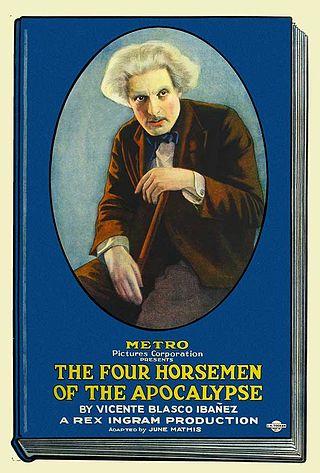
The Four Horsemen of the Apocalypse is a 1921 American silent epic war film produced by Metro Pictures Corporation and directed by Rex Ingram. Based on the 1916 Spanish novel The Four Horsemen of the Apocalypse, by Vicente Blasco Ibáñez, it was adapted for the screen by June Mathis. The film stars Pomeroy Cannon, Josef Swickard, Bridgetta Clark, Rudolph Valentino, Wallace Beery, and Alice Terry.
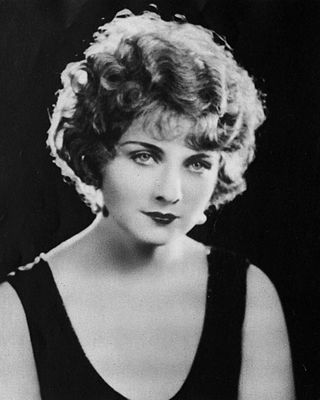
Alice Frances Taaffe, known professionally as Alice Terry, was an American film actress and director. She began her career during the silent film era, appearing in thirty-nine films between 1916 and 1933. While Terry's trademark look was her blonde hair, she was actually a brunette, and put on her first blonde wig in Hearts Are Trumps (1920) to look different from Francelia Billington, the other actress in the film. Terry played several different characters in the 1916 anti-war film Civilization, co-directed by Thomas H. Ince and Reginald Barker. Alice wore the blonde wig again in her most acclaimed role as "Marguerite" in film The Four Horsemen of the Apocalypse (1921), and kept the wig for any future roles. In 1925 her husband Rex Ingram co-directed Ben-Hur, filming parts of it in Italy. The two decided to move to the French Riviera, where they set up a small studio in Nice and made several films on location in North Africa, Spain, and Italy for MGM and others. In 1933, Terry made her last film appearance in Baroud, which she also co-directed with her husband.
Through a Naked Lens is a 2005 American play by author George Barthel. It received its world premiere Off-Broadway at the Wings Theatre in New York City. The play itself uses historical evidence and imagined circumstances to depict the rise of early Hollywood film star Ramón Novarro. While a celebration of Novarro’s life, the drama is told largely through the perspective of reporter Herbert Howe. While Barthel places Howe and Novarro in a romantic relationship, it is unknown if such a connection actually existed. Howe did, however, spend a great deal of time with Novarro as his publicist. The play also features Alice Terry, Rex Ingram, Irving Thalberg, Jim Quirk, Adela Rogers St. Johns, and Louis B. Mayer as characters.
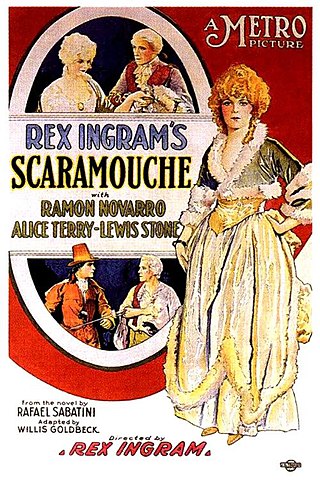
Scaramouche (1923) is a silent swashbuckler film based on the 1921 novel Scaramouche by Rafael Sabatini, directed by Rex Ingram, released by Metro Pictures, and starring Ramon Novarro, Alice Terry, Lewis Stone, and Lloyd Ingraham.

The Cat and the Fiddle is a 1934 American pre-Code romantic musical film directed by William K. Howard based on the hit 1931 Broadway musical of the same name by Jerome Kern and Otto A. Harbach, about a romance between a struggling composer and an American singer. The film stars Ramon Novarro and Jeanette MacDonald in her MGM debut.

The Arab is a 1915 American silent adventure film directed by Cecil B. DeMille. Edgar Selwyn wrote and starred in the Broadway play version of the story in 1911, and this film is based on that play. Selwyn reprises his role from his play. This film was refilmed by Metro Pictures in 1924 as The Arab.

The Prisoner of Zenda is a 1922 American silent adventure film directed by Rex Ingram, one of the many adaptations of Anthony Hope's popular 1894 novel The Prisoner of Zenda and the subsequent 1896 play by Hope and Edward Rose.
The Barbarian, also known as A Night in Cairo, is a 1933 American pre-Code romantic drama film produced and directed by Sam Wood and starring Ramon Novarro and Myrna Loy. Written by Elmer Harris and Anita Loos, and based on the 1911 play The Arab by Edgar Selwyn, the film is about an American woman tourist in Egypt who has several suitors, among them an Arab guide who is more than he seems. The film was released on May 12, 1933 in the United States by Metro-Goldwyn-Mayer. The play had been filmed previously by MGM as The Arab (1924) with Novarro and Alice Terry.

Rosita is a 1923 silent American historical comedy drama film directed by Ernst Lubitsch and starring Mary Pickford. The film is based upon an 1872 opera Don César de Bazan by Adolphe d'Ennery and Philippe Dumanoir.

The Garden of Allah is a 1927 American silent romantic drama film directed by Rex Ingram, his final film for Metro-Goldwyn-Mayer. The film stars Ingram’s wife, actress Alice Terry and Iván Petrovich. Due to the public's apathy towards silent films, a sound version was prepared and released in 1928. While the sound version has no audible dialog, it features a synchronized musical score with sound effects. The film was released in both sound-on-disc and sound-on-film formats.

Trifling Women is a 1922 American silent romantic drama film directed by Rex Ingram. It is credited with boosting the careers of its leads, Barbara La Marr and Ramon Novarro. It has been described as Ingram's most personal film.

Where the Pavement Ends is a 1923 American silent South Seas romantic drama film directed by Rex Ingram on location in Cuba and starring his wife Alice Terry and Ramon Novarro as lovers. The film was produced and distributed by Metro Pictures. It is now considered to be a lost film. Shooting began in September 1922, at Hialeah Studios in Miami, Florida, yet another source says the film was shot in Coconut Grove, Florida. According to a review in Life, the film was released with a "tragic" ending in New York City and a "happy" ending in other markets.
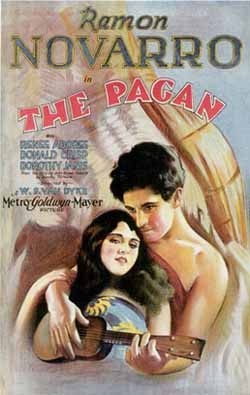
The Pagan is a 1929 synchronized sound romantic drama filmed in Tahiti and produced and distributed by Metro Goldwyn Mayer. While the film has no audible dialog, it was released with a synchronized musical score with sound effects using both the sound-on-disc and sound-on-film process. Both director W.S. Van Dyke and cinematographer Clyde De Vinna had previously visited Tahiti in 1928 to film White Shadows in the South Seas. The Pagan stars Ramón Novarro.
Photoplay Productions is an independent film company, based in the UK, under the direction of Kevin Brownlow and Patrick Stanbury. Is one of the few independent companies to operate in the revival of interest in the lost world of silent cinema and has been recognised as a driving force in the subject.

Lovers or Lovers? is a 1927 silent film romance drama produced and distributed by MGM and directed by John M. Stahl. It stars Ramon Novarro and Alice Terry. It is based on the 1908 play The World and His Wife and is a remake of a 1920 silent of the same name from Paramount. Lovers is a lost film.
Pierre Paul Vermoyal was a French stage and film actor.
















